PsyBorg
Wake up! Time to fly!
Ok the back story for this build is a response to @Mid7night's son Oberon learning to fly his first quad fpv. There were several videos after he was gifted a tiny hawk. As he was learning they would head out to various places to fly serval aircraft from fixed wing to multi rotor.
One particular flight they were both in the air at the same time and somehow the baby hawk went down out in the desert they were flying in. After a long search and several return trips they decided the quad was lost.
This was about the time I usually do my yearly build for myself and was planning on doing a sub 250g build out of depression over the regulation and dismantling of our hobby. I wanted to see if it would be a suitable replacement for my 5 inchers I love ripping around when the time comes to retire or sell them off. I decided I would instead build it for Oberon so he did not have to wait long and lose his progress flying.
So planned the build ordered and gathered the parts and started the build. Not a hard effort by any means as I have built many quads in the last 6 years and have my method worked out pretty good. So here in this post I will show you how I took this..
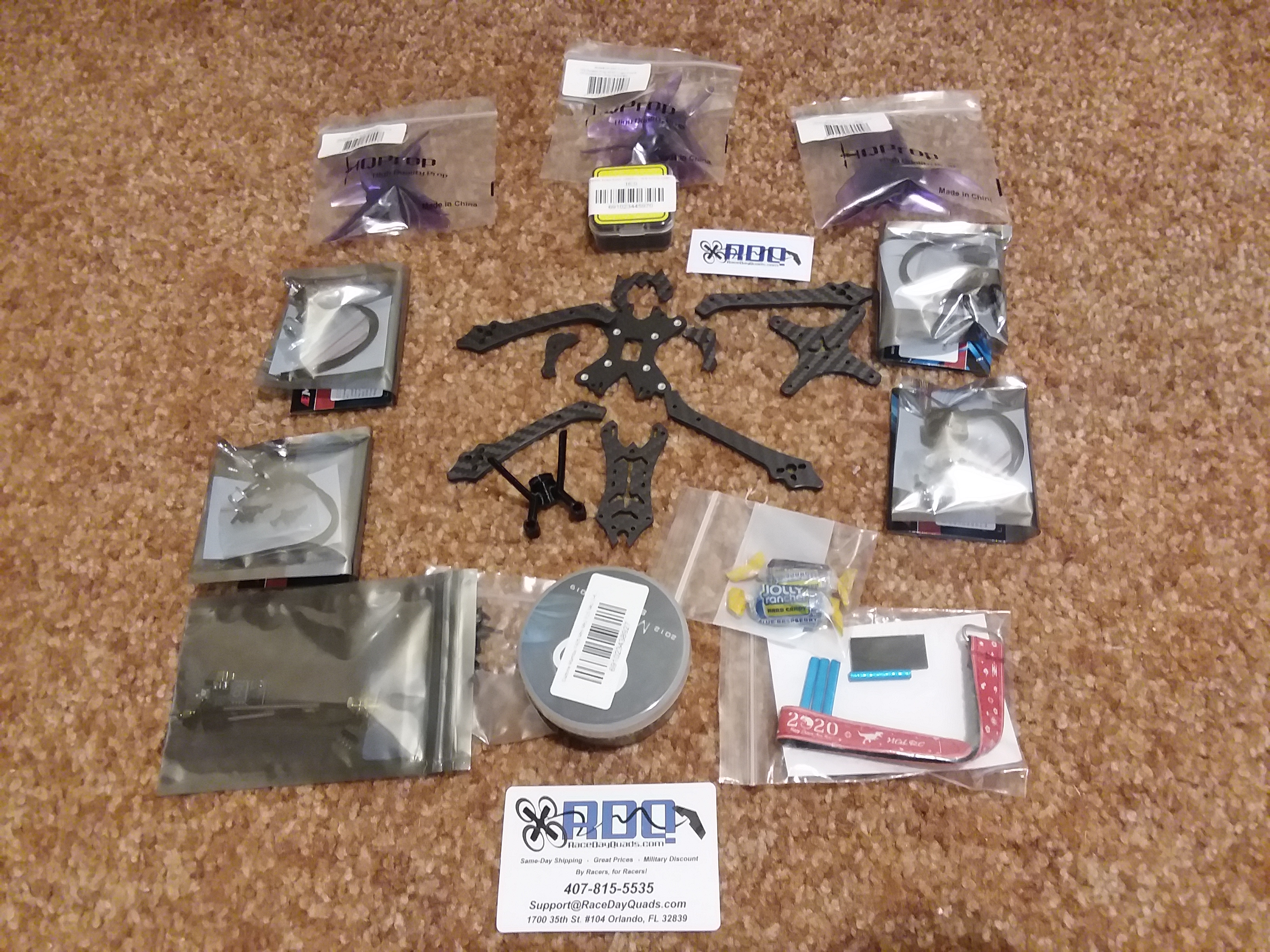
and made this
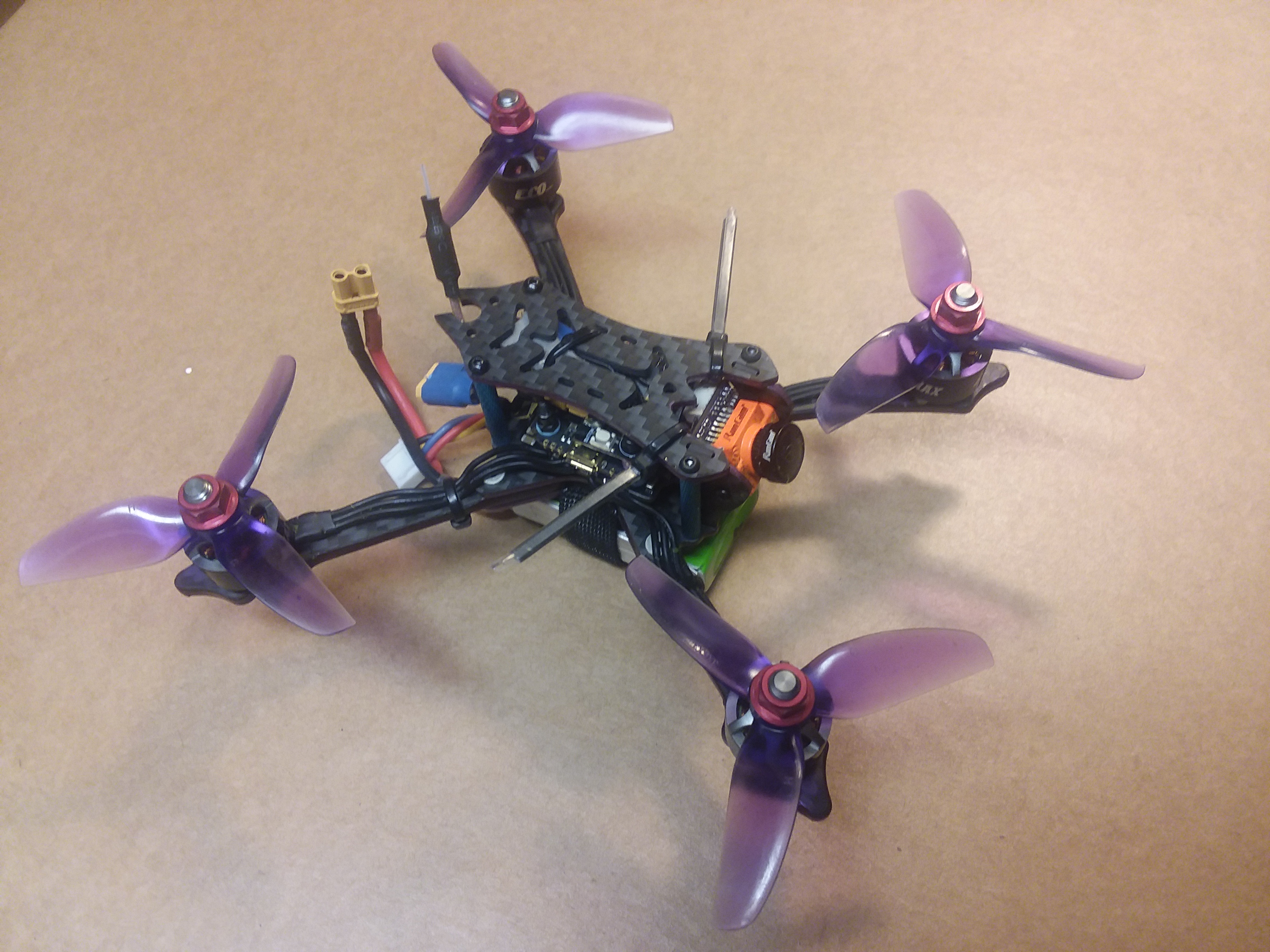
In later posts I will go on to show the radio set up, the flight controller settings and all the other stuff I do that others do not do to make my quads more versatile and not pigeon holed into one category now that I have learned most all of Betaflights ins and outs.
So first thing after inventorying all the parts to make sure it is all present and ready to go I do a quick mock up of the frame so I am familiar with how it goes together and get to see how much room I have to mount things. The main reason to mock it up though is to make sure all the parts are in fact present and that all the holes are drilled and align properly. Nothing more frustrating then doing all the prep work for a build only to find you can not mount something because a hole is missing or does not line up at all. You lose the ability to send it back once you mess with it.
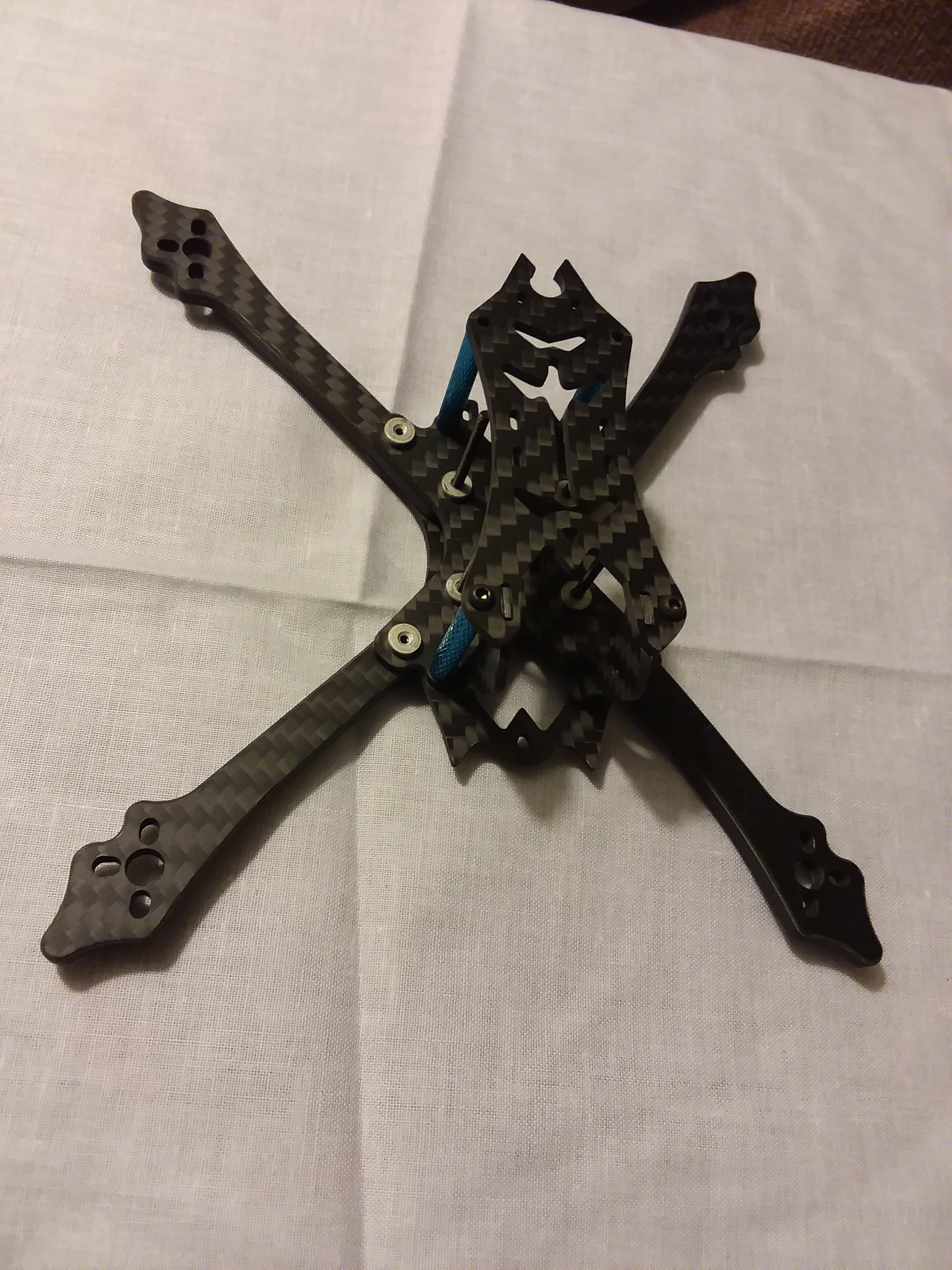
Looks good so on with the prep.
First thing I do is wash it off with warm soapy water and rinse and dry it good. This gets all the powdery stuff used to release the carbon from the manufacturing process as well as cleans any residual carbon dust and splinters. Once dry I look over each part and feel for sharp edges. Some frames are well prepped with chamfers and light sanding others are untouched and extremely sharp. This one had respectable edge work but still required a touch up in some spots with a diamond file.
If you have to do this on your frames do it under running water or in a tub of water as carbon dust is deadly. Rubber gloves is also a must as carbon splinters get infected super fast and are quite painful when in your finger tips that are constantly squeezing things.
Once all the edges are smooth I rewash any residual dust or water spots after filing. Once dry I take a small tube of Krazy glue gel and coat all the exposed sides / edges of the carbon on every piece where you can see the layers. Once dry I inspect to make sure there are no exposed areas or places that need a light sanding due to bubbles or drips. This is usually not an issue if I take my time. Here is the link to how I prep frames from a 5 inch build I did last year.
Once the edges are dry I decide what colors I want to paint the arms and plates. For this build I went with Testors Purple Metallic Flake for the edges of all the plates and Red Metallic Flake which when used over black carbon and clear glue looks more like Blood Red. I think the contrast between the two colors is awesome.
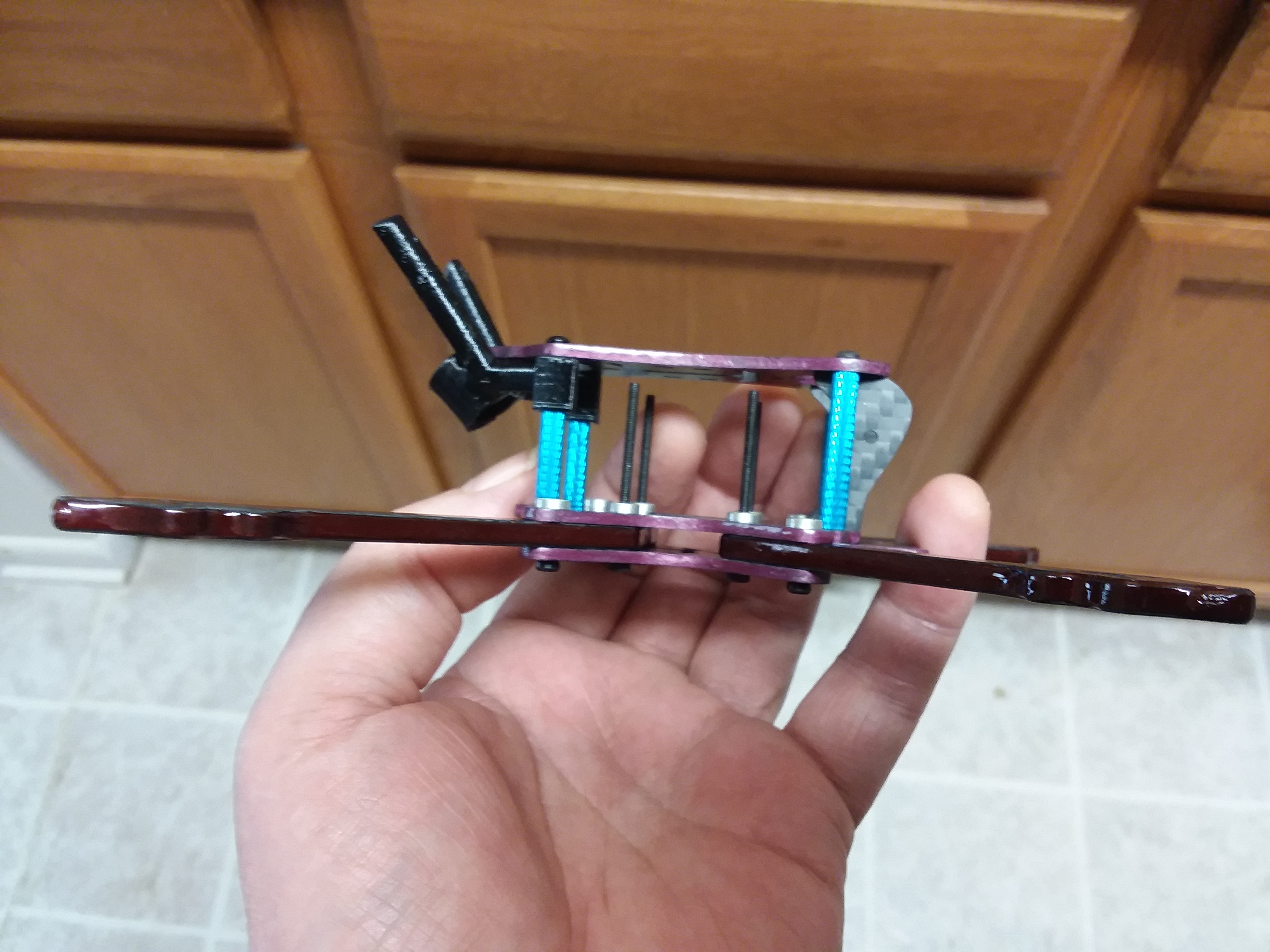
And to finish the series out this is the final iteration of this build. All up with a 850mah 4s pack is 253g and with a 650 mah pack will easily be below the 250g mark.
the parts list as finished is:
HGLRC 3" Arrow frame.
Diatone mamba F405 v2 stack with 25a esc
Emax ECO 1407 3300kv motors
Babyhawk race pro 2 VTX
Runcam Pheonix 2 camera
Axii stubby FPV antenna
and finally an Frsky r Xsr receiver.
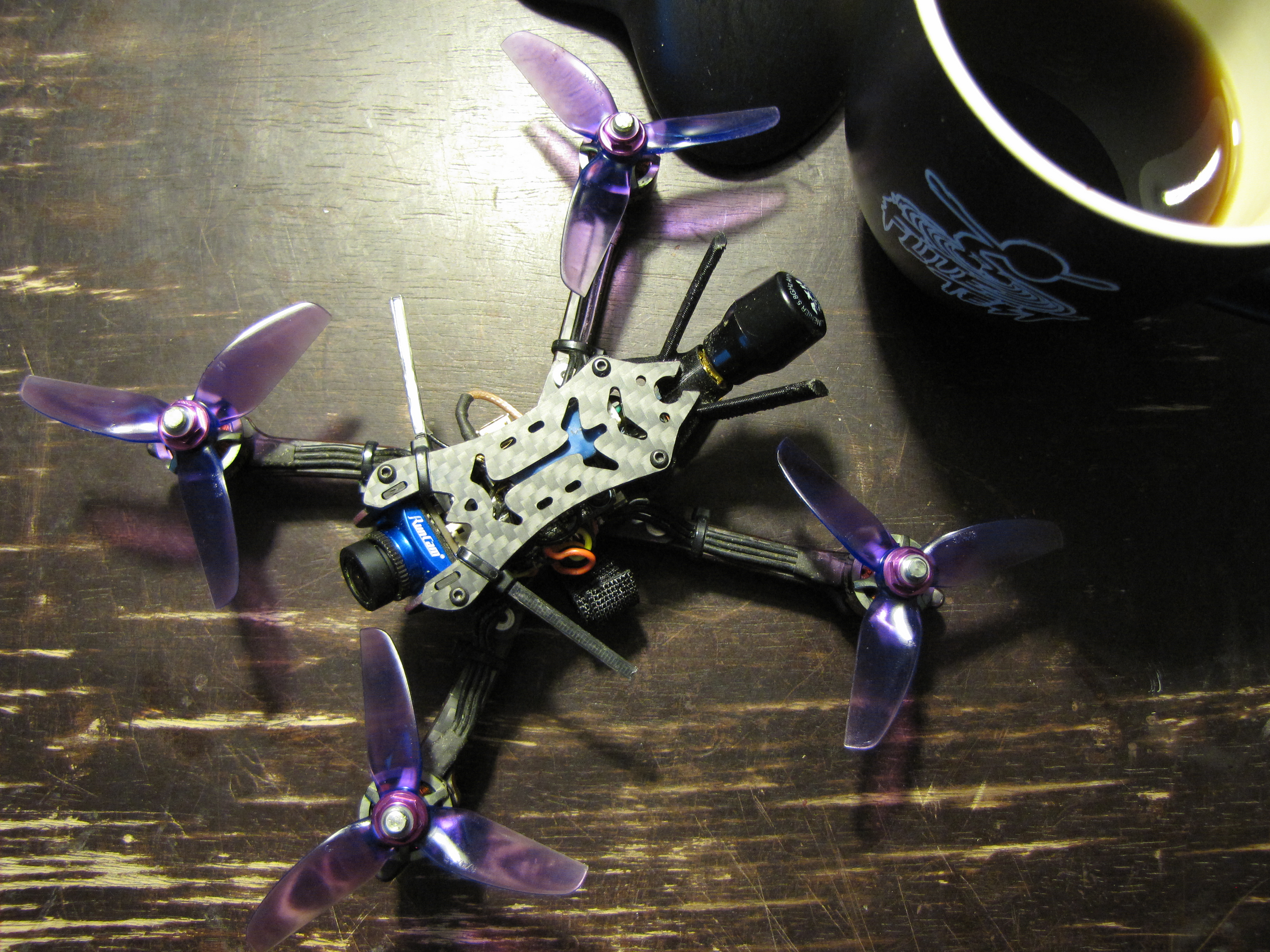
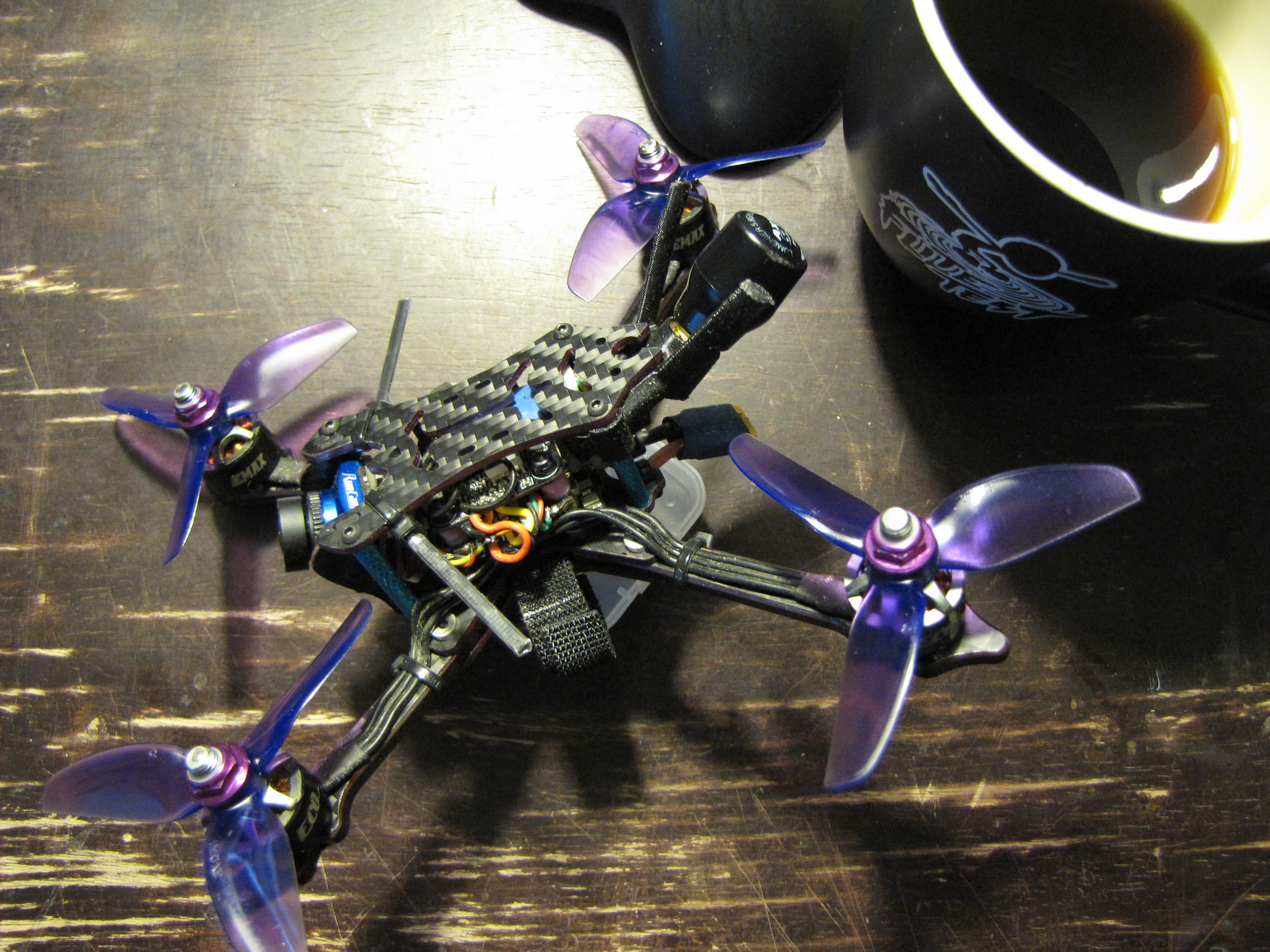
One particular flight they were both in the air at the same time and somehow the baby hawk went down out in the desert they were flying in. After a long search and several return trips they decided the quad was lost.
This was about the time I usually do my yearly build for myself and was planning on doing a sub 250g build out of depression over the regulation and dismantling of our hobby. I wanted to see if it would be a suitable replacement for my 5 inchers I love ripping around when the time comes to retire or sell them off. I decided I would instead build it for Oberon so he did not have to wait long and lose his progress flying.
So planned the build ordered and gathered the parts and started the build. Not a hard effort by any means as I have built many quads in the last 6 years and have my method worked out pretty good. So here in this post I will show you how I took this..

and made this

In later posts I will go on to show the radio set up, the flight controller settings and all the other stuff I do that others do not do to make my quads more versatile and not pigeon holed into one category now that I have learned most all of Betaflights ins and outs.
So first thing after inventorying all the parts to make sure it is all present and ready to go I do a quick mock up of the frame so I am familiar with how it goes together and get to see how much room I have to mount things. The main reason to mock it up though is to make sure all the parts are in fact present and that all the holes are drilled and align properly. Nothing more frustrating then doing all the prep work for a build only to find you can not mount something because a hole is missing or does not line up at all. You lose the ability to send it back once you mess with it.

Looks good so on with the prep.
First thing I do is wash it off with warm soapy water and rinse and dry it good. This gets all the powdery stuff used to release the carbon from the manufacturing process as well as cleans any residual carbon dust and splinters. Once dry I look over each part and feel for sharp edges. Some frames are well prepped with chamfers and light sanding others are untouched and extremely sharp. This one had respectable edge work but still required a touch up in some spots with a diamond file.
If you have to do this on your frames do it under running water or in a tub of water as carbon dust is deadly. Rubber gloves is also a must as carbon splinters get infected super fast and are quite painful when in your finger tips that are constantly squeezing things.
Once all the edges are smooth I rewash any residual dust or water spots after filing. Once dry I take a small tube of Krazy glue gel and coat all the exposed sides / edges of the carbon on every piece where you can see the layers. Once dry I inspect to make sure there are no exposed areas or places that need a light sanding due to bubbles or drips. This is usually not an issue if I take my time. Here is the link to how I prep frames from a 5 inch build I did last year.
Once the edges are dry I decide what colors I want to paint the arms and plates. For this build I went with Testors Purple Metallic Flake for the edges of all the plates and Red Metallic Flake which when used over black carbon and clear glue looks more like Blood Red. I think the contrast between the two colors is awesome.

And to finish the series out this is the final iteration of this build. All up with a 850mah 4s pack is 253g and with a 650 mah pack will easily be below the 250g mark.
the parts list as finished is:
HGLRC 3" Arrow frame.
Diatone mamba F405 v2 stack with 25a esc
Emax ECO 1407 3300kv motors
Babyhawk race pro 2 VTX
Runcam Pheonix 2 camera
Axii stubby FPV antenna
and finally an Frsky r Xsr receiver.


Last edited:



































